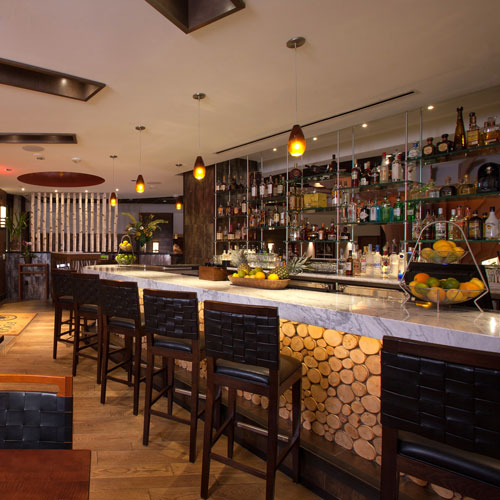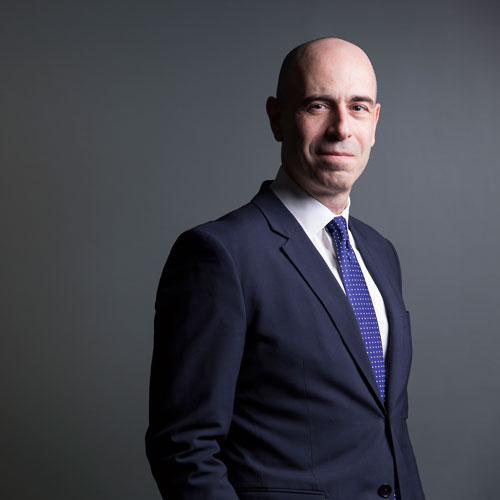The staff at Nelson Treehouse and Supply always knows when a marathon of their three-year-old TV show Treehouse Masters has aired on Animal Planet. “The next Monday there will be 200 emails in our inbox,” says Daryl McDonald, the company’s lead builder, who has been working with founder Pete Nelson since 2000. Together they have built more than 200 of their complex, innovative structures in six different countries.
The structures the company builds are a far sight from the simple playhouses kids used to have in their backyard a generation ago. Now these structures are luxury developments, often with multiple rooms, more than one floor, and electricity and running water. Nelson’s design work alone for one of these treehouses can cost $15,000.
McDonald didn’t set out to make treehouses, although he grew up on his father’s building sites. He met the Nelson family while he was attending the University of Washington.
“I started working on Pete’s personal house,” he says, adding that the house was in fact a ground-based structure. “While going to school, I ended up getting looped into a couple treehouse jobs early on and I was hooked.”
Now, like everyone else at the company, McDonald lives and breathes treehouses. “It’s the greatest job in the world,” he says. “Every treehouse is different, and every day is different. That allows us to be creative.”
The business has expanded dramatically since the TV show premiered three years ago. Back then, the company had one crew. Today, it has three crews working full-time—two on the road, and a third at its shop in Fall City, Washington, as well as additional people for design and administration. The team is truly a family affair—it includes Pete’s wife, Judy, and their three children (not to mention eight dogs and a cat). The company now builds between 20 and 24 projects a year, about half of which are for Treehouse Masters. In addition to full treehouses, the team also constructs platforms for six to eight clients a year who want to build their own structures.
McDonald’s role has evolved over the years, too. Although he started as a builder more than a dozen years ago, he now helps with design, visits sites, talks to clients, develops budgets, and helps bring Nelson’s designs to fruition. He also appears on camera on the TV show and met his wife, Nicola, through a treehouse workshop.
Treehouse Masters does more than sell the Nelson business. It also helps to expand the industry.
“The idea with the TV show and all of this knowledge sharing that we’re doing is to make treehouses more accessible to everybody, whether it’s a DIY-er or a builder,” McDonald says. “We want to make sure people know you can build in a tree safely—both for people and for the trees.”
Creative Projects Don’t Mean Going Out on a Limb

One of McDonald’s favorite projects was a treehouse built at Longwood Gardens, a botanical garden in Pennsylvania. The team spent an entire season building the two-story structure, which was inspired by a Norwegian church.
“The day it opened we acted as docents for the tour,” McDonald says. “It was really fun to see that many people enjoying the treehouse.” Today, he says the treehouse and gardens get about a million visitors a year.
“It’s great to build something so many people get to enjoy,” McDonald says.
Nelson’s current projects keep everyone on the team both busy and creative. At press time, the company was working on several treehouses, including a private restaurant dining room in an oak tree, a backyard art studio, a fully livable home with a kitchen and laundry, and a set of gazebos linked by bridges for a children’s camp.
All of the projects bring their own challenges, but McDonald says the industry itself provides unusual opportunities that he might not have encountered in a “regular” building career.
“Dealing with trees that are different every time, and unique, and living things, is a rare thing to ever be able to deal with when you’re a builder,” he says. “It’s like a merging of botany and carpentry and engineering.”
Thanks to the variety of trees the company gets to build on, and the different types of people he gets to work with, inspiration is never a tall order.
notable recent projects
CAMP FOR KIDS
Notable Features: Gazebos linked by bridges and cargo nets, with fire poles and swings
Size in sq ft: 600
Completion Date: Spring 2016
RESTAURANT DINING ROOM
Notable Features: Seating for 8 people with windows facing the sunset
Size in sq ft: 200
Completion Date: Spring 2016
LIVABLE TREEHOUSE
Notable Features: Kitchen, bathroom, laundry, solar power
Size in sq ft: 800
Completion Date: In conceptual design phase, completion expected by 2018
An Innovative Environment
Founder Pete Nelson is known for his innovative designs, but the company also constantly innovates with its technology.
Some of that innovation revolves around hardware. In conjunction with the broader treehouse industry, the company has developed a wide range of treehouse attachment bolts—not just for the industry’s own use, but for the general public to help construct their treehouses, and are available online.
“Trees are dynamic beings that you’re supporting a structure with, so you have to be respectful of that,” McDonald says.
The bolts are adapted to a wide variety of trees. Redwoods, for example, have soft wood but as much as six inches of bark, presenting more of a challenge to support the weight of a treehouse than an oak, which may have just half an inch of bark and a harder wood.
More recently Nelson’s Treehouse and Supply has moved into the digital realm, using a process known as “photogrammetry” to customize its designs for each set of trees. The process combines 40 to 50 photos from around a tree into a 3D model.
“You can then drop it into a CAD-style modeling software and build your treehouse up in the virtual world,” McDonald says. “You can see all the different spaces that are less obvious from the ground or see if there are any conflicts with limbs, things like that.”
Using the software is a relatively new skill set for Nelson, but McDonald says it’s a rising technology that they’re trying to figure out how to use efficiently.
*For more insight from Daryl McDonald on treehouse construction, check out these exclusive tips.
“The idea with the TV show and all of this knowledge sharing that we’re doing is to make treehouses more accessible to everybody, whether it’s a DIY-er or a builder. We want to make sure people know you can build in a tree safely—both for people and for the trees.”
Daryl McDonald, Lead Builder


